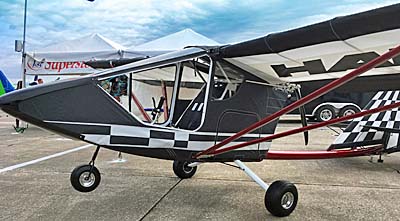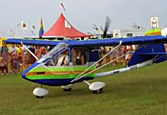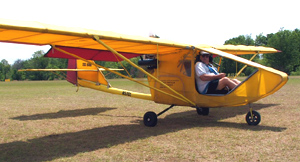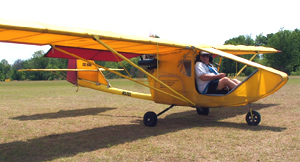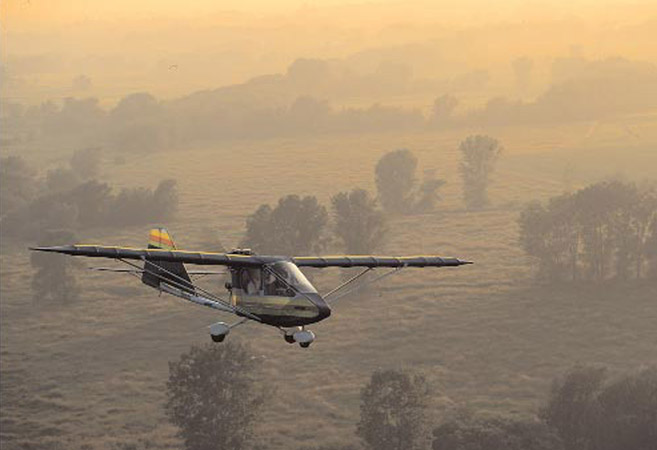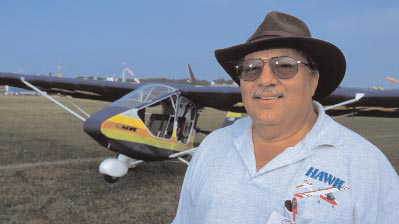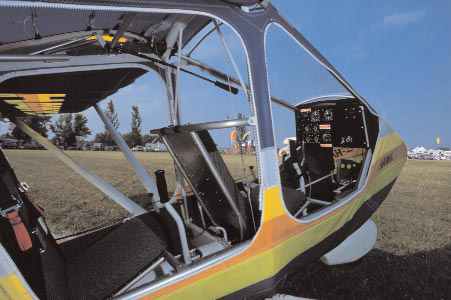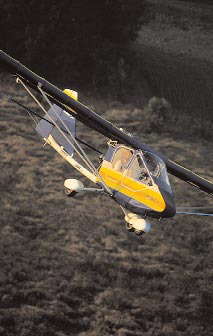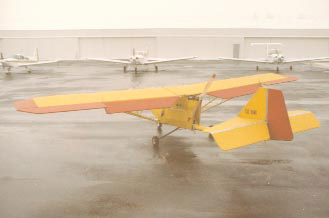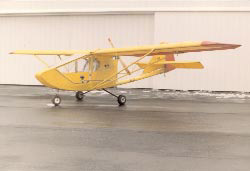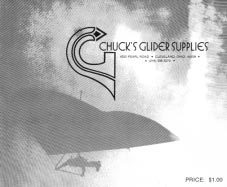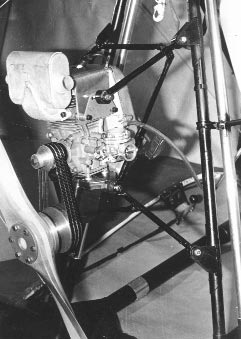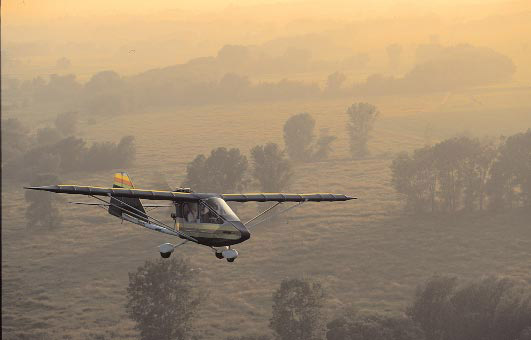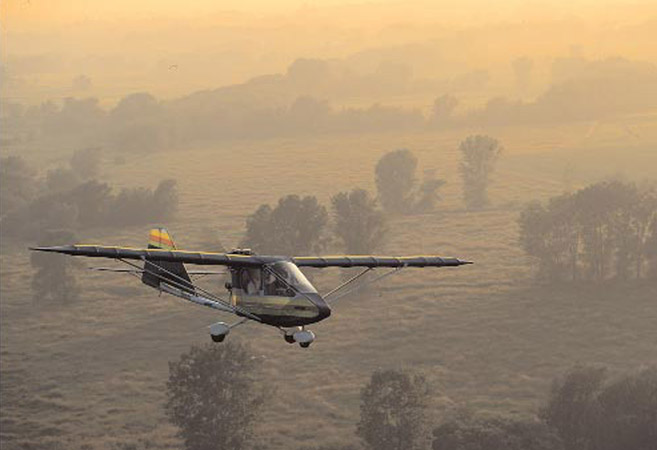
Way back when, long before the birth of the Light-Sport Aircraft segment (in 2004), lots of us flew ultralights. They were barely more than powered hang gliders — except one. Before 1982 these lightest-of-all aircraft were required to be foot-launchable. It’s true. I once staggered into the air partly carrying, partly dragging a Quicksilver. I got airborne thanks to a generous 15 mph headwind that provided about three quarters of the speed I needed for… um, you can’t call it “rotation,” but to get enough lift that I could sit down. Yes, “sit down.” You didn’t think I ran for take off while sitting comfortably belted into a secure seat did you? Nope, that Quicksilver had a literal swing seat and a special rear axle that allowed a full stride of your legs. OK, that requirement proved futile and FAA later dropped it, but one guy in particular drove that older requirement into the annals of history.


 Before 1982 these lightest-of-all aircraft were required to be foot-launchable. It's true. I once staggered into the air partly carrying, partly dragging a Quicksilver. I got airborne thanks to a generous 15 mph headwind that provided about three quarters of the speed I needed for… um, you can't call it "rotation," but to get enough lift that I could sit down.
Yes, "sit down." You didn't think I ran for take off while sitting comfortably belted into a secure seat did you? Nope, that Quicksilver had a literal swing seat and a special rear axle that allowed a full stride of your legs.
OK, that requirement proved futile and FAA later dropped it, but one guy in particular drove that older requirement into the annals of history. His name: Chuck Slusarczyk ("slew-ZAR-chick"…most folks just called him Chuck). Chuck's aircraft: Hawk.
Before 1982 these lightest-of-all aircraft were required to be foot-launchable. It's true. I once staggered into the air partly carrying, partly dragging a Quicksilver. I got airborne thanks to a generous 15 mph headwind that provided about three quarters of the speed I needed for… um, you can't call it "rotation," but to get enough lift that I could sit down.
Yes, "sit down." You didn't think I ran for take off while sitting comfortably belted into a secure seat did you? Nope, that Quicksilver had a literal swing seat and a special rear axle that allowed a full stride of your legs.
OK, that requirement proved futile and FAA later dropped it, but one guy in particular drove that older requirement into the annals of history. His name: Chuck Slusarczyk ("slew-ZAR-chick"…most folks just called him Chuck). Chuck's aircraft: Hawk.
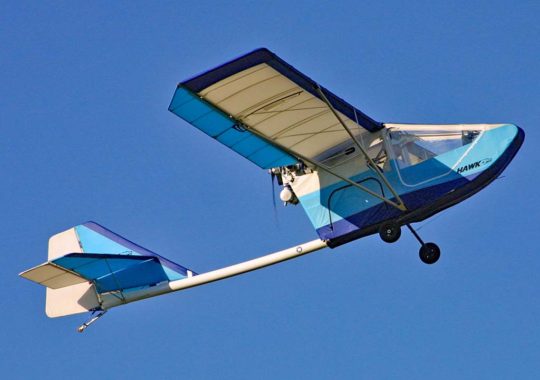 Hawk was the first ultralight to be fully enclosed, meaning it had a floor, meaning you could not foot-launch it. The rule was still in place when Chuck first debuted Hawk but that one aircraft lead us into the brave new world of wheel-launching.
That "CGS" abbreviation usually put before Hawk was from Chuck's even-earlier business: Chuck's Glider Supplies. He once made hang gliders, lots of them, and that's where Chuck and I first met. Gosh, we were young and handsome in those days. We were also stronger. I would actually attempt athletic feats like running a hang glider off a mountain cliff or stumbling my way into the air grasping my Quicksilver (which, for the record, also started off as an unpowered glider).
Hawk was the first ultralight to be fully enclosed, meaning it had a floor, meaning you could not foot-launch it. The rule was still in place when Chuck first debuted Hawk but that one aircraft lead us into the brave new world of wheel-launching.
That "CGS" abbreviation usually put before Hawk was from Chuck's even-earlier business: Chuck's Glider Supplies. He once made hang gliders, lots of them, and that's where Chuck and I first met. Gosh, we were young and handsome in those days. We were also stronger. I would actually attempt athletic feats like running a hang glider off a mountain cliff or stumbling my way into the air grasping my Quicksilver (which, for the record, also started off as an unpowered glider).
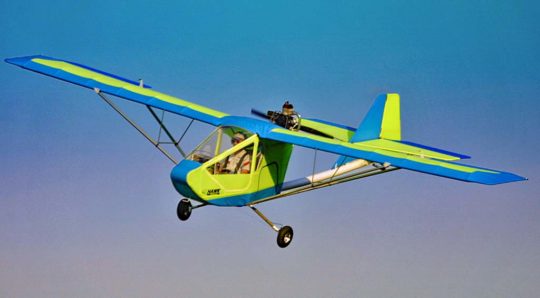 The point of this series of short (5-minute) videos is to identify aircraft almost anyone can afford. I should not have to say it, but please don't assume a $5,000, decades-old ultralight will compare well to a modern LSA. The good news is that, in some ways, such a low-cost aircraft might even be more fun assuming you use good judgement about when and where to fly.
Over 40 years have passed with many Hawk aircraft still safely flying today. Some are offered for sale on various outlets. Both Dave and I have flown CGS Hawks —
The point of this series of short (5-minute) videos is to identify aircraft almost anyone can afford. I should not have to say it, but please don't assume a $5,000, decades-old ultralight will compare well to a modern LSA. The good news is that, in some ways, such a low-cost aircraft might even be more fun assuming you use good judgement about when and where to fly.
Over 40 years have passed with many Hawk aircraft still safely flying today. Some are offered for sale on various outlets. Both Dave and I have flown CGS Hawks — 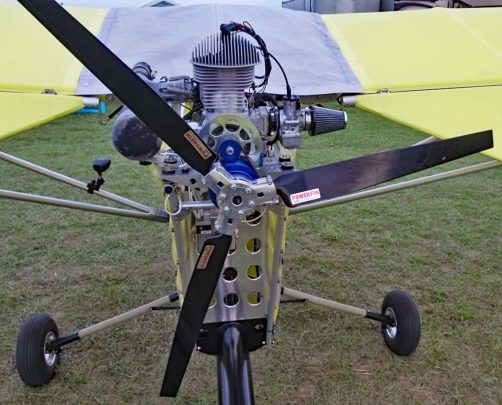 My words and Dave's videos give recommendations for aircraft that we have flown, owned, and/or built. As Dave notes,
My words and Dave's videos give recommendations for aircraft that we have flown, owned, and/or built. As Dave notes, 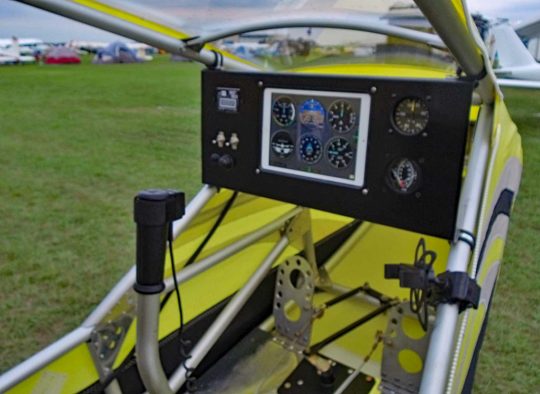
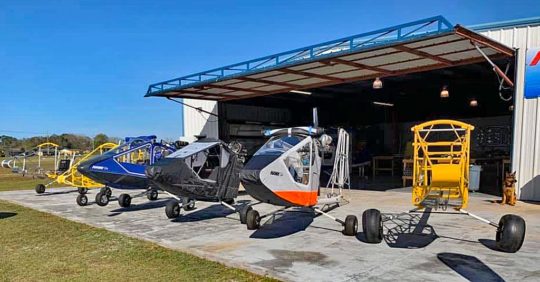
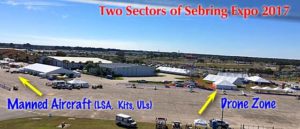 At Sebring 2017, another long-awaited aircraft emerged... or re-emerged. After wandering for a few years since original Hawk developer Chuck Slusarczyk retired and sold his company, the once-popular design has a new home in central Florida.
I've written about this before (
At Sebring 2017, another long-awaited aircraft emerged... or re-emerged. After wandering for a few years since original Hawk developer Chuck Slusarczyk retired and sold his company, the once-popular design has a new home in central Florida.
I've written about this before (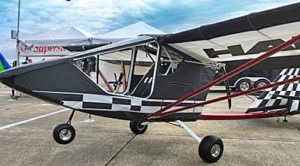 Indeed, Terry beamed when he told me that he'd already sold six aircraft (recently; not all at the show), most of them the two-seat variety as shown in the nearby photos plus one Part 103 ultralight.
Because original designer Chuck Slusarczyk won FAA acceptance for an ASTM-compliant model, Terry can supply a fully built Special Light-Sport Aircraft version and at Sebring 2017 he told me that he fully intends to do so. Because any new manufacturer, even of an existing brand, can be required to go through an FAA audit, a SLSA Hawk may not be an immediate development. (The agency can also elect to review documents and not do an on-site inspection, at their discretion. For a slower speed, lighter weight aircraft with many hundreds flying, FAA may choose not to make a manufacturing site visit.)
Amid the displays at Sebring's 13th annual Expo, many attendees took a look at this new model and came away with a smile. Several times as I passed Terry's display at Sebring, people seemed to be examining his handsome entry with interest.
Indeed, Terry beamed when he told me that he'd already sold six aircraft (recently; not all at the show), most of them the two-seat variety as shown in the nearby photos plus one Part 103 ultralight.
Because original designer Chuck Slusarczyk won FAA acceptance for an ASTM-compliant model, Terry can supply a fully built Special Light-Sport Aircraft version and at Sebring 2017 he told me that he fully intends to do so. Because any new manufacturer, even of an existing brand, can be required to go through an FAA audit, a SLSA Hawk may not be an immediate development. (The agency can also elect to review documents and not do an on-site inspection, at their discretion. For a slower speed, lighter weight aircraft with many hundreds flying, FAA may choose not to make a manufacturing site visit.)
Amid the displays at Sebring's 13th annual Expo, many attendees took a look at this new model and came away with a smile. Several times as I passed Terry's display at Sebring, people seemed to be examining his handsome entry with interest.
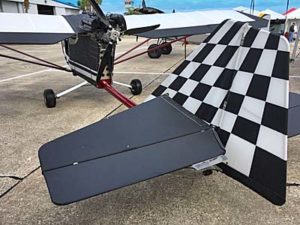 New Hawk proprietor Terry acquired the venerable Hawk line from previous owner Danny Dezauche who bought the company from Chuck. Danny kept the brand alive but did not progress too far with it.
All told, CGS Hawks number close to 2,000 units flying. Many owners to whom I've spoke truly love this simple but well-flying aircraft.
CGS originally stood for Chuck's Glider Supplies. Chuck was an early leader in hang gliding and made thousands of them. As "motorized" hang gliders arrived on the scene back in the late '70s and early '80s, Chuck made the jump. In fact, he formerly sold "power packs" to others who wanted to power their hang gliders.
One thing lead to another and Chuck developed his company into a airplane manufacturer, leaving behind his youthful days as a hang glider pilot and entrepreneur.
After decades of operation, Chuck sold his company to enjoy a well-deserved retirement and Alabama businessman Danny Dezauche kept it going for a few years.
A year ago, in January 2016, Dezauche sold CGS Hawk to Terry Short based in Lake Wales, Florida. After retiring from the Polk County School Board, Terry and his son Chris will operate the enterprise in central Florida. They will support the many hundreds of Hawks still flying with parts and services in addition to build several of the models including the Special LSA Model called Hawk II, a tandem two seater.
Catch Terry and the Hawk at
New Hawk proprietor Terry acquired the venerable Hawk line from previous owner Danny Dezauche who bought the company from Chuck. Danny kept the brand alive but did not progress too far with it.
All told, CGS Hawks number close to 2,000 units flying. Many owners to whom I've spoke truly love this simple but well-flying aircraft.
CGS originally stood for Chuck's Glider Supplies. Chuck was an early leader in hang gliding and made thousands of them. As "motorized" hang gliders arrived on the scene back in the late '70s and early '80s, Chuck made the jump. In fact, he formerly sold "power packs" to others who wanted to power their hang gliders.
One thing lead to another and Chuck developed his company into a airplane manufacturer, leaving behind his youthful days as a hang glider pilot and entrepreneur.
After decades of operation, Chuck sold his company to enjoy a well-deserved retirement and Alabama businessman Danny Dezauche kept it going for a few years.
A year ago, in January 2016, Dezauche sold CGS Hawk to Terry Short based in Lake Wales, Florida. After retiring from the Polk County School Board, Terry and his son Chris will operate the enterprise in central Florida. They will support the many hundreds of Hawks still flying with parts and services in addition to build several of the models including the Special LSA Model called Hawk II, a tandem two seater.
Catch Terry and the Hawk at 